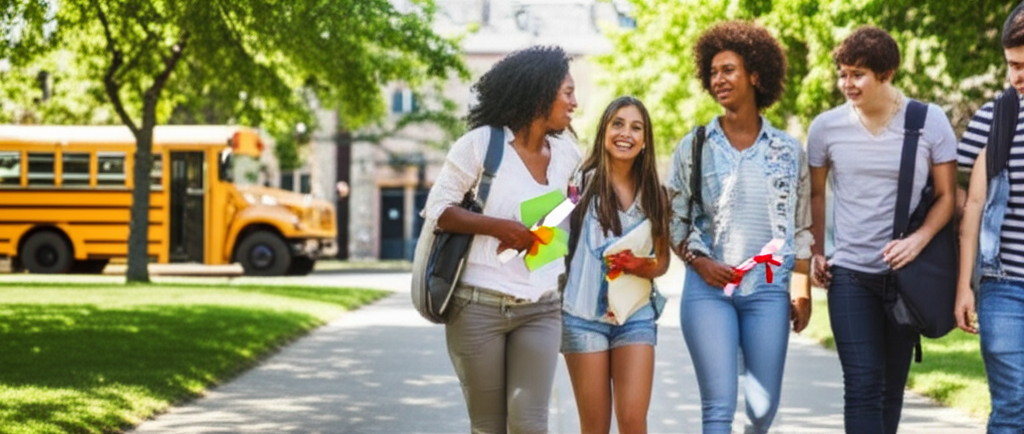Navigating the challenges within our educational systems requires understanding common problems schools face and implementing effective, practical solutions. This guide offers clear, actionable strategies for students, parents, and educators to foster a more supportive and successful learning environment.
Every school system, no matter how well-intentioned, encounters its share of hurdles. From student engagement and resource allocation to curriculum development and teacher support, these challenges can impact the learning experience for everyone involved. Recognizing these issues is the first step toward finding workable solutions. This article breaks down some of the most common problems schools face and offers practical, often simple, ways to address them, making education more effective and accessible.
Understanding Common Problems Schools Face

It’s easy to feel overwhelmed when faced with difficulties in education, but many common issues have underlying causes that, once understood, can be tackled. Let’s look at some of the most prevalent challenges:
Student Engagement and Motivation
One of the most significant problems schools grapple with is keeping students actively engaged and motivated. When students aren’t interested, they struggle to learn and retain information. This can stem from a variety of factors, including:
- Curriculum that feels irrelevant or outdated.
- Teaching methods that don’t cater to diverse learning styles.
- Lack of connection between classroom learning and real-world applications.
- External pressures and distractions affecting students’ focus.
Resource Allocation and Funding
Many schools, particularly those in underfunded districts, struggle with inadequate resources. This can manifest as:
- Outdated technology and learning materials.
- Large class sizes that make individualized attention difficult.
- Limited access to specialized programs like arts, music, or STEM.
- Insufficient support staff, such as counselors or special education teachers.
Teacher Burnout and Support
Teachers are the backbone of any educational system, but they often face immense pressure. High workloads, demanding administrative tasks, and the emotional toll of supporting students can lead to burnout. This impacts their effectiveness and can lead to high teacher turnover rates, which further disrupts student learning.
Bridging the Achievement Gap
Disparities in academic performance between different student groups are a persistent problem. Factors like socioeconomic status, access to early childhood education, and home environment can create gaps that schools work hard to close. Ensuring equitable opportunities for all students is a complex but crucial goal.
Parental Involvement
While many parents are deeply involved, some face barriers to participating in their child’s education. These can include work schedules, language barriers, or a lack of understanding of how to best support their child’s learning. Fostering strong home-school partnerships is essential but can be challenging to achieve universally.
Stunning Solutions for Problems Schools Encounter
Now that we’ve identified some key problems schools face, let’s explore some practical and innovative solutions. These are not always grand, expensive overhauls but often involve thoughtful adjustments and community involvement.
Boosting Student Engagement and Motivation
To combat disinterest, schools can implement strategies that make learning more dynamic and relevant:
- Project-Based Learning (PBL): Instead of rote memorization, PBL allows students to explore real-world problems, develop critical thinking skills, and collaborate. This hands-on approach makes learning more engaging and memorable.
- Differentiated Instruction: Recognizing that students learn differently, teachers can adapt their methods to suit various learning styles. This might involve visual aids, auditory explanations, kinesthetic activities, or offering choices in how students demonstrate understanding.
- Technology Integration: Utilizing educational apps, interactive whiteboards, and online resources can make lessons more dynamic. Gamification of learning can also be a powerful motivator for some students.
- Connecting Learning to the Real World: Bringing in guest speakers from various professions, organizing field trips, or highlighting current events related to curriculum topics can show students the practical value of what they are learning.
Maximizing Resources and Funding
Even with budget constraints, creative solutions can enhance resource availability:
- Community Partnerships: Collaborating with local businesses, non-profits, and universities can provide guest instructors, mentorship opportunities, and access to specialized equipment or facilities.
- Grant Writing and Fundraising: Actively seeking grants and organizing school-wide fundraisers can provide much-needed funds for technology upgrades, new library books, or extracurricular programs.
- Resource Sharing: Schools within a district can sometimes share specialized resources, equipment, or even teaching staff to maximize efficiency and impact.
- Volunteer Programs: Engaging parents and community members as volunteers can help alleviate some of the strain on limited staff resources, assisting with tasks from tutoring to library management.
Supporting Teachers and Preventing Burnout
Investing in teachers means investing in students:
- Professional Development: Offering ongoing training that focuses on practical strategies, classroom management, and new educational technologies can empower teachers and keep them engaged.
- Mentorship Programs: Pairing new teachers with experienced mentors provides them with invaluable support and guidance, helping them navigate the challenges of the profession.
- Reducing Administrative Burden: Streamlining paperwork and administrative tasks allows teachers to focus more on teaching and less on bureaucracy.
- Promoting Work-Life Balance: Schools can encourage healthy boundaries, provide opportunities for collaboration and peer support, and recognize the hard work and dedication of their staff.
Addressing the Achievement Gap
Equity in education is paramount:
- Early Intervention Programs: Identifying and supporting students who are struggling early on can prevent them from falling further behind. This includes targeted tutoring and academic support.
- Culturally Responsive Teaching: Ensuring that curriculum and teaching methods acknowledge and value the diverse backgrounds of students can increase engagement and academic success for all.
- After-School Programs: Providing safe and enriching environments for students after school hours can offer academic support, enrichment activities, and a positive outlet, particularly for students who may lack these resources at home.
- Family Engagement Initiatives: Proactive outreach to families, offering resources and support in accessible formats and languages, can help bridge the gap between home and school.
Enhancing Parental Involvement
Building strong home-school connections is key:
- Flexible Communication Channels: Offering multiple ways for parents to communicate with the school, such as email, phone calls, dedicated apps, and in-person meetings at various times, can accommodate different schedules.
- Parent Workshops: Hosting workshops on topics like supporting homework, understanding curriculum, or navigating the school system can empower parents with the knowledge and tools they need.
- Translators and Interpreters: Ensuring that communication is accessible to parents who speak different languages is crucial for inclusivity.
- Creating Welcoming School Environments: Making the school a place where parents feel comfortable and valued, whether for volunteering, attending events, or meeting with staff, fosters a sense of partnership.
Addressing the problems schools face is an ongoing process that requires collaboration, creativity, and a shared commitment to student success. By understanding the challenges and implementing these stunning solutions, we can collectively build stronger, more supportive, and more effective educational environments for all.

